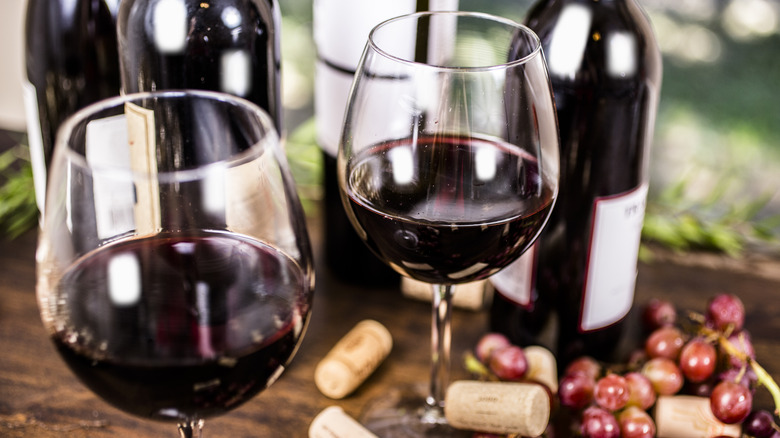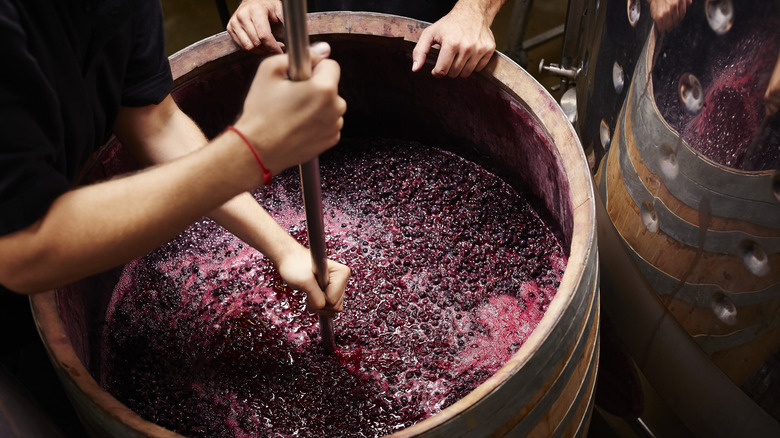How Many Grapes Does It Take To Make A Bottle Of Wine?
From the vine to the glass, the humble little grape takes quite a journey as it transforms from a lone berry (yes, grapes are technically berries) to the nectar of the Gods. Behind every great glass of wine you'll find years of craftsmanship, carefully chosen growing locations, and rows upon rows of vines bursting with a bounty of grapes. If you've ever contemplated the winemaking process before, you may find yourself wondering — how many grapes does it actually take to make a bottle of wine?
The short answer is, a bottle of wine usually includes 600 to 800 average sized grapes, although some bottles may incorporate the juice of thousands of grapes. There are over 10,000 varieties of grapes that are used for making wine, and those varieties, well, vary. Different types of grapes, different types of wine, and different winemaking processes all factor into the process and determine how many grapes end up making it into a bottle of wine.
Of course, winemakers aren't counting grapes when make a batch of wine. They measure by weight. And because they're making lots of wine with lots of grapes, they're not calculating by the pound – they're often calculating by tons. But with a little math to the rescue, winemakers agree that most bottles of wine include about 2.5 pounds of grapes, which roughly translates to around 10 grape clusters per bottle.
What else impacts the amount of grapes in a bottle of wine?
Whether you're looking for an upscale bottle of wine to pair with your dinner or just choosing a wine to cook with, a lot of time and labor went into producing that bottle. The process behind each bottle, however, might be quite different from winemaker to winemaker. In order to extract the juice from the grapes, the grapes must be pressed. Each winemaker might get a different amount of juice from the same amount of grapes. A heavy press will extract more juice from each grape, but often at the expense of the final product. A lighter press, on the other hand, will extract less juice but may result in a more refined final bottle of wine.
Thick-skinned grapes, like those used for Cabernet Sauvignon, will produce less juice, while their thinner-skinned counterparts, such as the varietal used for Pinot Noir, will be a bigger juice producer, thus requiring fewer grapes. Maybe your wine of choice is a dessert wine. Dessert wines, which have rich and sweet flavor profiles, require more grapes to get that texture and flavor dessert wines are known for. Add into the equation the amount of rainfall a harvest has received, the soil the grapes were grown in, and the winemaker's style, and you can see that a final count for the number of grapes in a bottle of wine is hostage to a slew of ever-changing variables.

